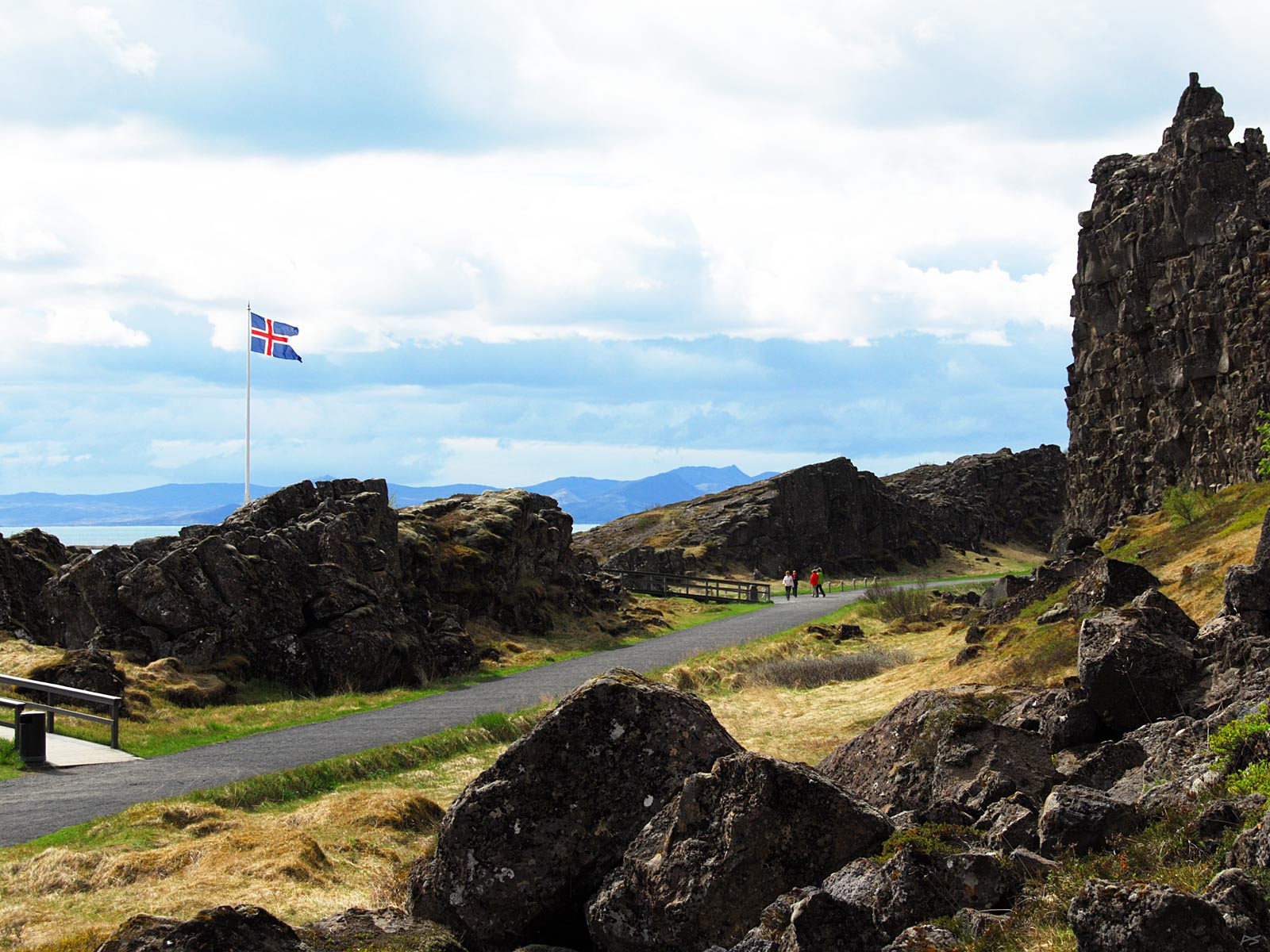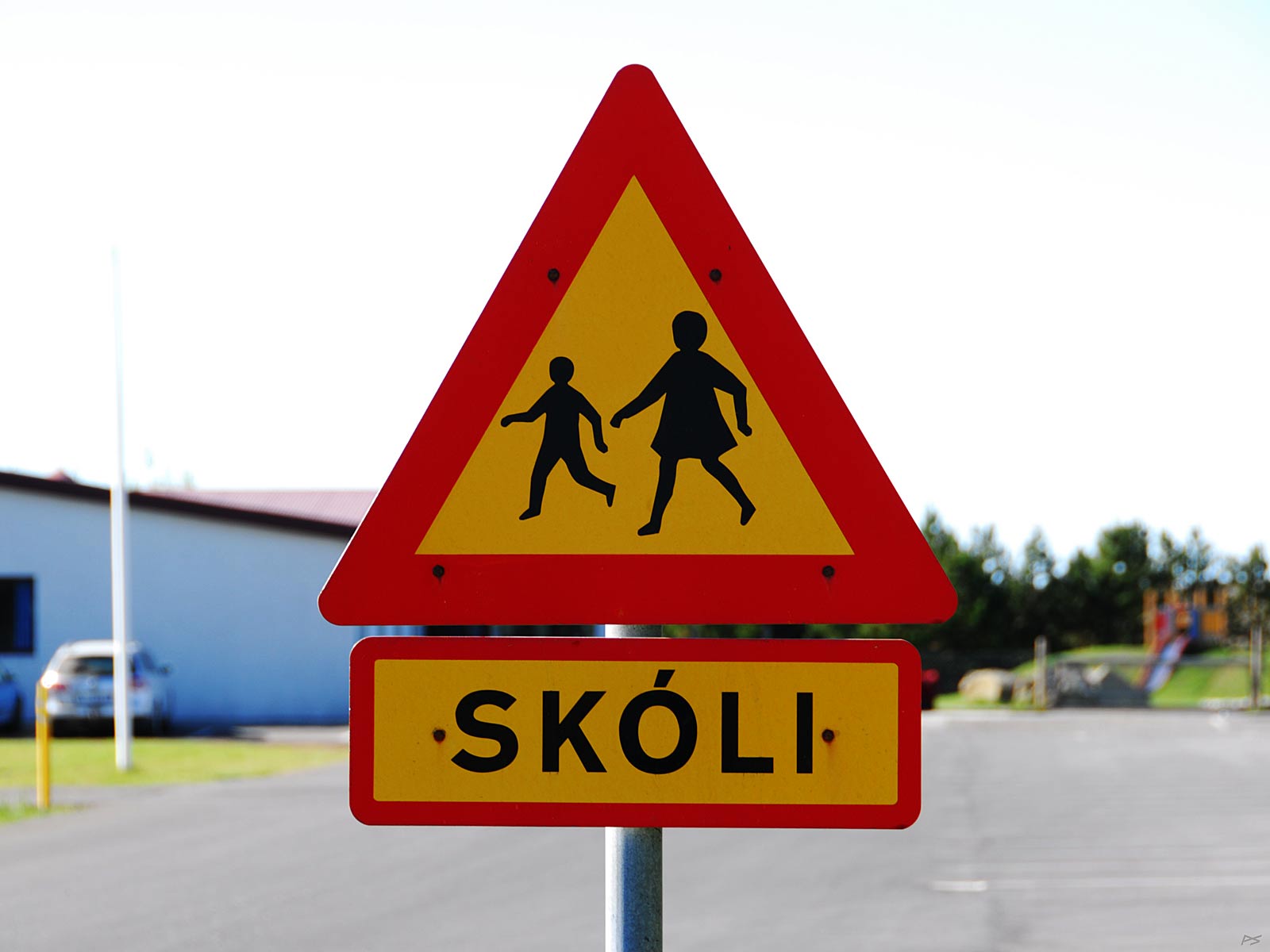Viking families and Celtic slaves
arrived here around eleven hundred years ago.
Their descendants have lived through many hard times
and has ended up
as a hardworking and prosperous people.

(2010-06-01)
The first settlers in Iceland are believed to be Irish monks seeking solitude, but they disappeared when the noisy Norsemen came. The first Norseman to try settling there was Flóki Vilgeðarson, usually called Hrafna-Flóki because he used ravens to locate the island. Allegedly in the year 865 he sailed with his family, men and livestock to Vatnafjörður on the peninsula Vestfirðir, far north on the west coast. The first winter was very cold and all the cattle died. Once during the winter Flóki climbed a high mountain from where he spotted the large fjord to the north, now called Ísafjörður, where ice was drifting. Flóki then named the whole land Ísland ('ís'='ice'), and that name stuck. After another winter further south on the west coast Flóki sailed to Norway, never to return.
The first Norseman to settle in Iceland, in Reykjavik in 874, is assumed to be Ingólfur Arnason. The next fifty years or so many Norsemen emigrated from what is now Norway to Iceland, often bringing with them slaves, mainly from Ireland, but also from Scotland. Modern gene technology has revealed that of the ancestors of the present population, some 80 per cent of the men came from Norway, but some 60 per cent of the women were Celtic.

In the year 930 the chieftains, copying the legal systems of independent parts of their previous homeland (now Norway), instituted Alþingi, an annually gathering parliament at Þingvellir (picture above) that gave laws and applied laws. This system governed Iceland fairly well for nearly three hundred years, but entering the twelve hundreds, feuds between competing clans became a really serious problem, and finally in 1262 the chieftains felt forced to accept Haakon IV of Norway as the King of Iceland. In 1380 Norway, including Iceland, entered a union with Denmark. When this union ended in 1814, Iceland stayed with Denmark, but in 1874 Iceland was granted self government and in 1918 full sovereignty in a personal union with the Danish king. Denmark was occupied by German forces from April 1940 till May 1945, and on the 17th of June 1941 the Republic of Iceland was declared. Therefore the 17th of June is Independence Day.
The population of Iceland is about 320,000 which means about three per square kilometres. Most of these live in the Reykjavik area.

Iceland is a country rich in resources. There is fish in the ocean, the main source of export. There is a lot of energy, and many hydroelectric and geothermal power stations have been built, but so far the energy has been exported mainly as aluminium. A sea cable has been discussed, but building more power stations and transmission lines is often controversial, also conflicting with the tourist industry. Around 2008 the financial economy had a great crash, but the Icelanders are hardworking, and together with the natural resources, the real economy is better than in most European countries, which is what counts in the long run.

(2010-06-02)
So we may assume the present and coming generations will prosper here. Even if volcanos and international economy may cause setbacks.

(2010-06-04)

And speaking of the young ones – and schools. School attendance is obligatory for all children between the ages of 6 and 16. After that the students can start in a special school or a four year secondary school which gives admission to a university. Outside the Reykjavík area the population density is very low and most towns are rather small. Therefore there are many boarding schools spread throughout the country. This is a very small one, a 'hússtjórnarskóli' in the great Hallormsstaður forest at the lake Lagarfljót near Egílstaðir. This means a schools for domestic science (home economics). There are 22 students in winter, and as the buildings of most other boarding schools, they serve as a hotel in summer. The architecture is also quite typical: It shows that here snow does not tend to accumulate (on roofs) during the winter.

(2010-06-01)
Iceland is a peaceful nation with no military. But between 1940 and 2006 the United States Air Force had a base in Keflavík. And then there were the "Cod Wars" with the British in the 1950s and 1970s. Iceland extended its economic sone outside the island three times in this period, which resulted in conflicts with British trawlers, cutting of trawls, British warships in the area, some firing of guns etc. The conflict ended in 1976 when Iceland threatened to close down the Keflavík air base, and USA applied the necessary pressure on the UK.
A special feature of historic Iceland is the Sagas (c.f. English 'say'), claimed true stories mainly from the 'söguöld' (saga age) 930-1030. They were written down much later, between 1200 and 1400. That also encompasses the authorship of Snorri Sturluson (1178-1241), a historian and politician. The Icelandic language hasn't changed much since those days and Icelandic children have no problem reading the old texts.
Most Icelanders don't have a family name, only the given name. Then a patronym (rarely a matronymic) is added. For example, Egil's daughter and son might be called Lilja Egilsdottir and Gunnar Egilsson. This how it was also in Sweden and Norway prior to some 150 years ago.
